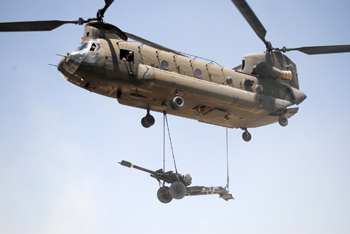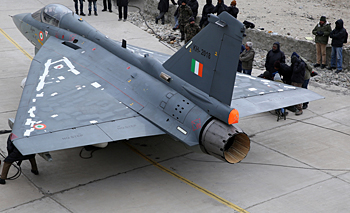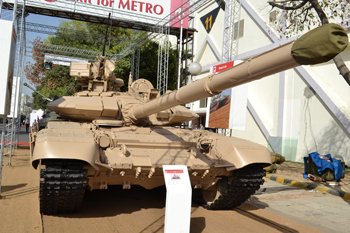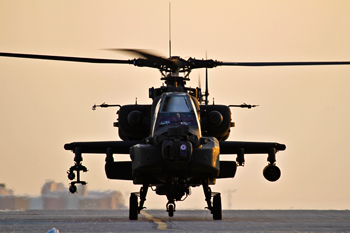INDIAN ARMED FORCES CHIEFS ON OUR RELENTLESS AND FOCUSED PUBLISHING EFFORTS

SP Guide Publications puts forth a well compiled articulation of issues, pursuits and accomplishments of the Indian Army, over the years

"Over the past 60 years, the growth of SP Guide Publications has mirrored the rising stature of Indian Navy. Its well-researched and informative magazines on Defence and Aerospace sector have served to shape an educated opinion of our military personnel, policy makers and the public alike. I wish SP's Publication team continued success, fair winds and following seas in all future endeavour!"

Since, its inception in 1964, SP Guide Publications has consistently demonstrated commitment to high-quality journalism in the aerospace and defence sectors, earning a well-deserved reputation as Asia's largest media house in this domain. I wish SP Guide Publications continued success in its pursuit of excellence.
The New DPP
 |
By Lt. General P.C. Katoch (Retd) Former Director General of Information Systems, Indian Army |

Chinook helicopter

LCA Tejas

T-90

M777 Lightweight Howitzer

AH-64 Apache attack helicopter
Defence Minister Manohar Parrikar acknowledged on sidelines of Aero India 2015 that Make in Defence for the defence sector required streamlining. India’s Defence Procurement Procedure (DPP) has been reviewed annually for the past several years and there has been much fanfare every time a new one was issued. But the fact remains that there has been no change from importing 70 percent of our defence requirements that shows the sorry state of R&D, indigenization and government focus on matters military. The fact remains that any country that imports 70 percent of defence requirements can hardly be militarily strong. That the MoD under AK Anthony as Defence Minister remained inert and brought military preparedness to 1962 levels, government websites acknowledge that the 30 percent defence equipment produced indigenously is largely sub-standard. With the change of government and new Defence Minister, expectations are in the air of changes that would alter this pathetic state especially with Prime Minister Narendra Modi’s call of ‘Make in India’. There is need to examine what changes to the DPP are warranted to bring us out from the current glut. On 31 December last year Defence Minister Manohar Parrikar had told media that government is open to reviewing all cases of blacklisted defence firms on merit and that the ban on Tatra trucks has been partially lifted. This was apparently based on the new DPP draft under preparation that after going through further procedures was to go to the Union Cabinet for approval. The new policy is expected to outline measured steps instead of outright blacklisting firms, steps to be taken for various offences, if committed. The new DPP will also allow foreign defence firms to legally hire agents. The Minister had expressed hope that the final draft policy will be out in a month and half which will lay thrust on development of domestic defence industry and faster acquisition process. Subsequently on 31 January 2015, the Defence Minister has called for more autonomy to be given in decision making to DPSUs and OFBs for better performance. Addressing the Consultative Committee attached to MoD, Defence Minister Manohar Parrikar today said MoD would be bringing about major changes in the DPP and the Defence Production Policy to provide greater autonomy to the DPSUs and OFB units (there are 9 DPSus and 41 OFs) for their expansion, diversification and enable them take decisions to improve serviceability of platforms available to the Armed Forces. He said the Make in India Procedure in Defence needs further improvement and that defence industry in India is a unique with Services as the only customer. Interestingly, participating MPs wanted to know: whether Government has drawn up a clear roadmap to reduce Defence imports. Some felt there was a concerted campaign to denigrate the public sector and to promote the private sector; unlike consumer products, the design and development of defence product has long gestation and should be appreciated in that light. They expressed the view that the private sector must be promoted in a big way, but not at the cost of the public sector. What needs to be understood here is that the we indigenously our defence sector has remained defunct because we have simply not let the private sector come up in this sphere. Are we going to overlook that in the past 50 years, our defence industry with DRDO at the apex has not developed a single platform or defence equipment in the laid down timeframe? The Tejas taking 30 years and 5.56 INSAS taking 15 years are just two examples. Dis they have less autonomy when numerous projects were undertaken, and are still being undertaken, without reference to the user and in many cases even without ‘official’ knowledge of the government; unofficial knowledge was always there with joint secretaries of Department of Defence Production (DoDP) on various boards od the DRDO, DPSUs and OFs. Would this change simply because an MoD bureaucrat now heads DRDO? The question also is that are we looking at defence equipment ‘through’ DRDO-DPSUs-OFs or is there is parallel opening to the private sector and much more importantly has the division been clearly defined (who is to make what) based on a long-term roadmap to bridge the 70 percent imports and improving the 30 percent indigenously produced content? We need to acknowledge capabilities of the private sector because our objective of self-reliance will remain elusive unless the private sector is duly integrated and its potential fully harnessed to build a viable indigenous defence industrial base. The Government has to create an environment wherein the private sector feels assured of just business opportunities, level playing ground and fair play. Enlarging the DRDO empire would amount to playing into the hands of the arms mafia that very much is alive and kicking. Is there any justification for the DRDO empire producing thousands of products that are available / should be handled by civil (not private defence) industry? And finally, the Defence Minister must understand that without user integration this whole exercise of transforming the defence industrial complex will remain incomplete. Mr Parrikar acknowledged in the Consultative Committee meeting that the sole customer India’s defence industry are the Services. So why are Services not part of the design, planning, policy and decision making in the DRDO Empire? Why Services are officers not posted at all these levels? Why has the MoD not been restructured likewise? In absence of such essential changes we would not be doing much different from past decades because defence is specialized business, not just business.





